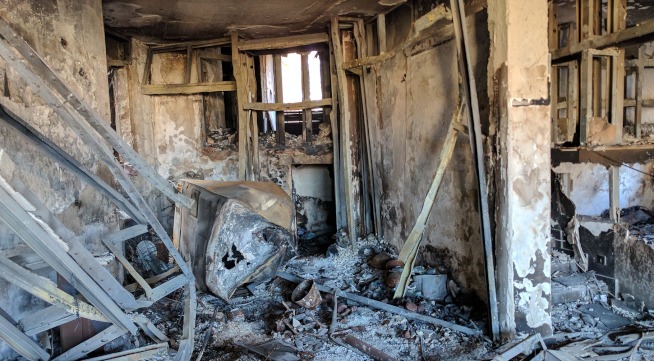Earlier this month, the big four banks all announced donation and relief packages to support individuals and communities affected by the ongoing bushfire crisis and aid frontline organisations.
CBA and ANZ both pledged $1-million packages to support customers and local communities affected by the bushfire emergency, while Westpac has announced a $1.5-million fund – and NAB recently extended its fund to a total of $5 million.
The Commonwealth Bank of Australia (CBA) has now announced that it is accepting applications for its Bushfire Recovery Grants and is extending the maximum limit for each grant to $50,000.
To be eligible to apply for a CommBank Bushfire Recovery Grant, applicants must be a community organisation, fire service, school, sporting club or non-government organisation in a bushfire-affected area (i.e. not an individual) and:
- Need to replace or repair facilities or property which was lost or damaged by bushfire during the 2019-20 bushfire season and is not likely to be covered by insurance;
- Be able to identify how repair or replacement of the facilities or property will benefit the community;
- Not be implementing projects with any political objectives; and
- Hold a current bank account in Australia in its name.
The bank said it expects to fund projects worth at least $10 million through the scheme.
Applications will be accepted until 5pm AEDT on 31 March 2020.
Commonwealth Bank chief executive Matt Comyn commented: “While firefighters, volunteers and other emergency workers continue to battle the fires that have destroyed so many towns around the country, we have increased the value of the grants program to assist these communities with the rebuilding process.
“CBA’s focus is on providing practical, on-the-ground support to provide immediate assistance to affected customers. Just as importantly, we want to support these communities to rebuild facilities and infrastructure, and that is what our grants program is designed to do.
“We have increased both the total value of grants and the value of each grant in response to expected demand.”
The bank also said that its bushfire appeal, which comprises donations from customers and staff, has already surpassed the $1-million mark. CBA has said it will match all donations on a dollar-for-dollar basis.
This additional money will be used to support the CBA Bushfire Recovery Grants Program, Mr Comyn said.
The bank added that it is continuing to support customers affected by the bushfires through its Emergency Assistance Package, which has reportedly already expedited processing of insurance claims worth almost $100 million.
The package also provides CommInsure customers whose homes have been damaged with emergency accommodation and allows for deferred repayments for home loan, credit card and personal loan customers, among other financial relief measures.
Economic impact of the bushfires
The Australian bushfire season has now reportedly destroyed more than 7 million hectares of bushland since September 2019, claimed the lives of 25 people and caused countless damage to wildlife, livestock and communities.
With more than 200 fires still burning and emergency procedures in place in several states, the widespread view from economists is that the economy will be dragged down by the crisis, making a February rate cut increasingly likely.
According to AMP Capital chief economist Shane Oliver, the ongoing bushfire crisis could result in a 0.4 per cent detraction from Australia’s gross domestic product, or up to 1 per cent should the fires continue throughout the rest of summer.
Mr Oliver said the damage to property and wealth caused by the bushfires “will likely run into many billions”, noting that the Victorian Black Saturday bushfires were reported to have cost $4.4 billion, while the current fires have covered an area 15 times larger than that.
The economic hit comes from disruptions to business, particularly agriculture and farming, as well as reduced tourism activity and subdued consumer spending.
Mr Oliver estimates that the cost of the bushfires could knock “around 0.4 per cent” off GDP in the December quarter, but will mainly impact the March quarter.
He adds that GDP could tick up again in June, when rebuilding may start again, but – should the fires continue over the remainder of the summer – the negative impact on GDP could be as much as 1 per cent.
[Related: Bushfires to hit GDP by at least 0.4% in Q1: AMP]
 ;
;